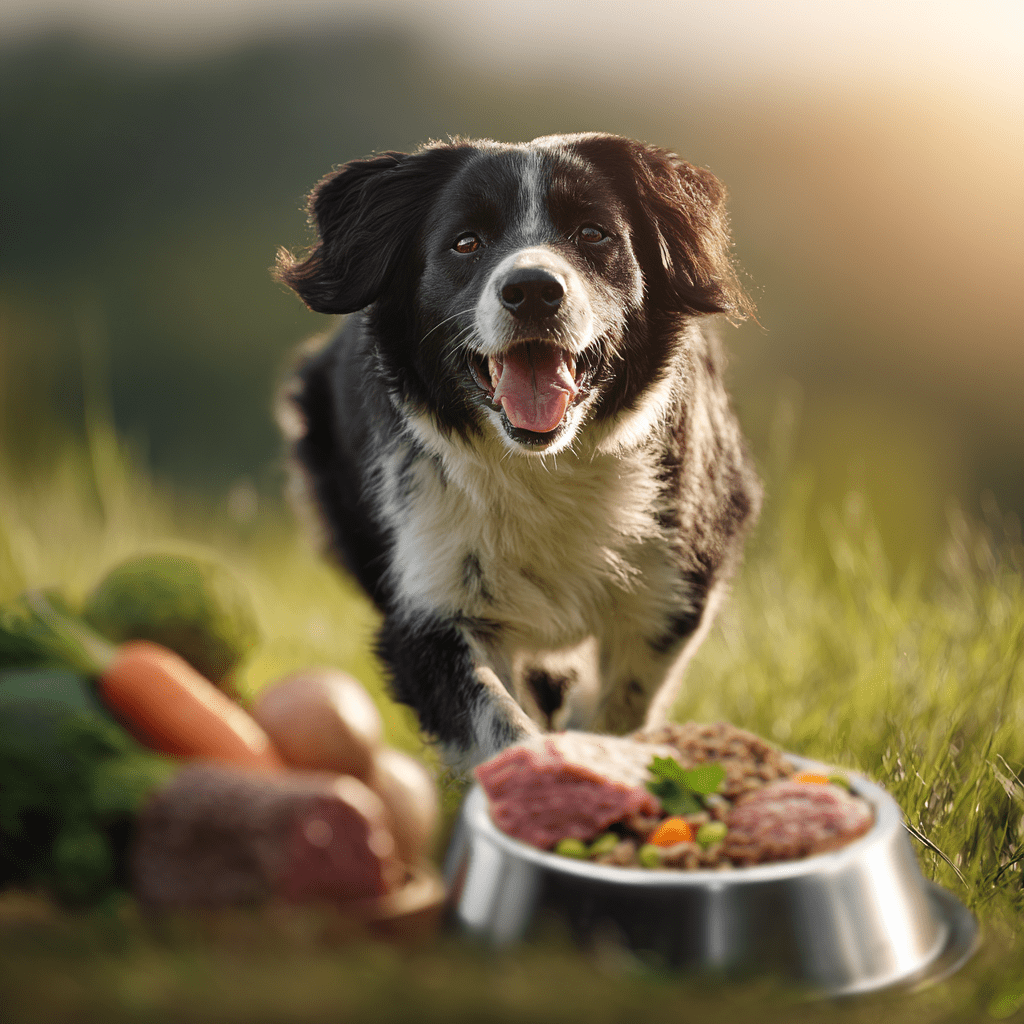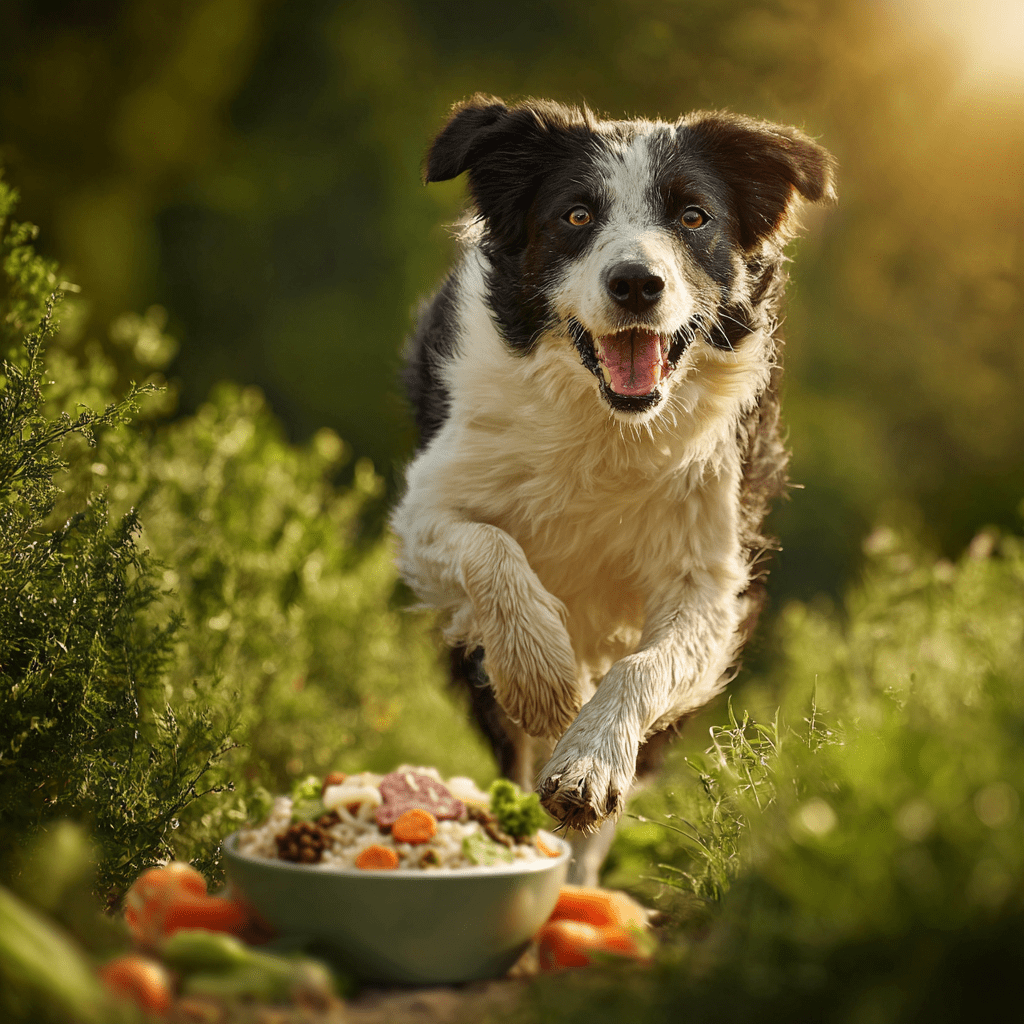Introduction
Active dogs – whether they’re working dogs, agility competitors, hiking companions, or simply high-energy breeds – have special nutritional needs. Just like athletes, they burn more calories, use more muscle, and need the right fuel to stay healthy, strong, and energized.
Feeding your active dog isn’t just about giving them more food; it’s about choosing the right nutrients, balancing proteins and fats, and avoiding harmful fillers. In this guide, we’ll explore the best diets for active dogs, the key nutrients they need, and practical feeding tips to keep them thriving.
Why Active Dogs Need Specialized Diets
Not all dogs have the same energy requirements. A couch-loving pug has a very different metabolism from a Labrador who joins you on 5-mile runs.
Active dogs need diets that:
- Provide higher protein for muscle repair.
- Supply healthy fats for long-lasting energy.
- Offer complex carbs for endurance.
- Deliver hydration and electrolytes to prevent fatigue.
Feeding them a standard pet diet may leave them undernourished or, conversely, overweight if calories aren’t balanced with exercise.
Key Nutrients for Active Dogs
- Protein: The Building Block of Strength
- Protein repairs and builds muscles stressed during exercise.
- Look for diets with 25–30% protein from sources like chicken, beef, salmon, or turkey.
- Eggs and lamb are excellent complete protein sources.
- Fat: The Ultimate Energy Source
- Dogs metabolize fat more efficiently than carbohydrates.
- Ideal diets for active dogs have 15–20% fat content.
- Choose omega-3 and omega-6 fatty acids from fish oil, flaxseed, or chicken fat for joint and coat health.
- Carbohydrates: Fuel for Endurance
- Complex carbs release energy gradually.
- Opt for sweet potatoes, oats, barley, or brown rice over corn or wheat fillers.
- Vitamins & Minerals
- Calcium and phosphorus strengthen bones.
- B vitamins boost metabolism.
- Antioxidants (Vitamin E, C, selenium) support recovery and immunity.
- Hydration & Electrolytes
- Active dogs lose more fluids, especially in hot climates.
- Always provide fresh water and consider dog-safe electrolyte supplements after intense activity.
Best Types of Diets for Active Dogs

1. High-Protein Kibble
- Convenient, balanced, and available in performance formulas.
- Brands often include glucosamine for joint support.
- Look for meat as the first ingredient.
2. Raw Diets (BARF – Biologically Appropriate Raw Food)
- Includes raw meat, bones, organs, and vegetables.
- Provides natural proteins and fats for sustained energy.
- Risks: Requires safe handling and precise balance to avoid nutrient gaps.
3. Fresh/Frozen Prepared Meals
- Human-grade meals made with fresh ingredients.
- Great for picky eaters or dogs with allergies.
- More costly but nutritionally rich.
4. Homemade Diets
- Allows control over every ingredient.
- Must be guided by a vet nutritionist to avoid deficiencies.
- Can include lean meats, organ meats, veggies, and grains.
5. Specialty Performance Diets
- Specifically formulated for working and sporting dogs.
- Often higher in protein, fat, and calories per serving.
Feeding Tips for Active Dogs
- Adjust Portions Based on Activity
- Increase food intake on days with heavy exercise.
- Reduce portions on rest days to prevent weight gain.
- Meal Timing Matters
- Avoid feeding right before intense exercise (risk of bloat).
- Feed 1–2 hours before activity, and give a recovery meal after.
- Use Treats Wisely
- Opt for protein-rich treats (like freeze-dried chicken) instead of biscuits.
- Keep treats under 10% of daily calories.
- Monitor Body Condition
- Active dogs should have a visible waistline and easily felt ribs.
- Regular weigh-ins help track health.
- Work With Your Vet
- Every dog is unique – breed, age, and activity level all matter.
- Annual checkups can ensure their diet is working.
Common Mistakes to Avoid
- Feeding low-quality kibble with fillers like corn and soy.
- Overfeeding calories without considering exercise level.
- Ignoring hydration and electrolyte replacement.
- Skipping protein in favor of carbs.
Sample Meal Plan for an Active Medium-Sized Dog
(45-pound dog running daily)
- Breakfast: Kibble formulated for active dogs (chicken + brown rice, 28% protein, 17% fat).
- Snack: Small serving of plain Greek yogurt with blueberries.
- Dinner: Fresh-cooked turkey, sweet potato, and spinach mix.
- Post-Workout Treat: Freeze-dried salmon bites.
Conclusion
Feeding your active dog the right diet is one of the most powerful ways to fuel their performance, protect their health, and extend their lifespan. By prioritizing protein, healthy fats, and complex carbs, you’ll provide the strength and stamina your dog needs while supporting recovery and long-term wellness.
Remember: Every dog is different. What works for a husky who hikes mountains may not be right for a Jack Russell who loves agility courses. Work with your veterinarian to fine-tune their diet, and you’ll be giving your dog the fuel they need to stay active, happy, and strong.
